Wood flooring remains a timeless choice for homeowners, offering natural beauty and durability. However, contemporary wood flooring takes this classic material to new heights with innovative designs, finishes, and installation techniques. Let’s explore some of the most exciting contemporary wood flooring ideas that can transform your home into a modern masterpiece.
Wide Plank Wood Flooring
Wide plank wood flooring has gained popularity in recent years for its ability to create a spacious and cohesive look in any room. Traditional wood flooring typically uses narrower planks, but contemporary designs embrace wider boards, which can range from five to twelve inches in width. These wider planks showcase the natural grain and texture of the wood, adding a sense of luxury and sophistication.
One of the main benefits of wide plank wood flooring is its ability to make a room appear larger. The fewer seams and lines break up the space less, creating a more expansive feel. This makes wide plank flooring an excellent choice for smaller rooms or open-concept living areas where you want to maximize the sense of space.
In addition to their aesthetic appeal, wide planks can also offer practical benefits. Fewer seams mean fewer places for dirt and dust to accumulate, making wide plank floors easier to clean and maintain. This can be particularly advantageous for households with pets or children, where keeping floors clean is a constant task.
When it comes to choosing the type of wood for wide plank flooring, the options are extensive. Oak, maple, and walnut are popular choices, each offering unique grain patterns and colors. For a more rustic look, reclaimed wood is an excellent option, adding character and history to your floors.
Installation of wide plank flooring can be more challenging than standard planks, particularly in terms of acclimation and expansion. Wood naturally expands and contracts with changes in humidity, and wider planks can be more prone to these movements. Proper acclimation and professional installation are key to ensuring a stable and long-lasting floor.
To enhance the contemporary feel of wide plank flooring, consider using a matte or satin finish. These finishes offer a more modern look compared to traditional high-gloss finishes and can help highlight the natural beauty of the wood without overwhelming the space.
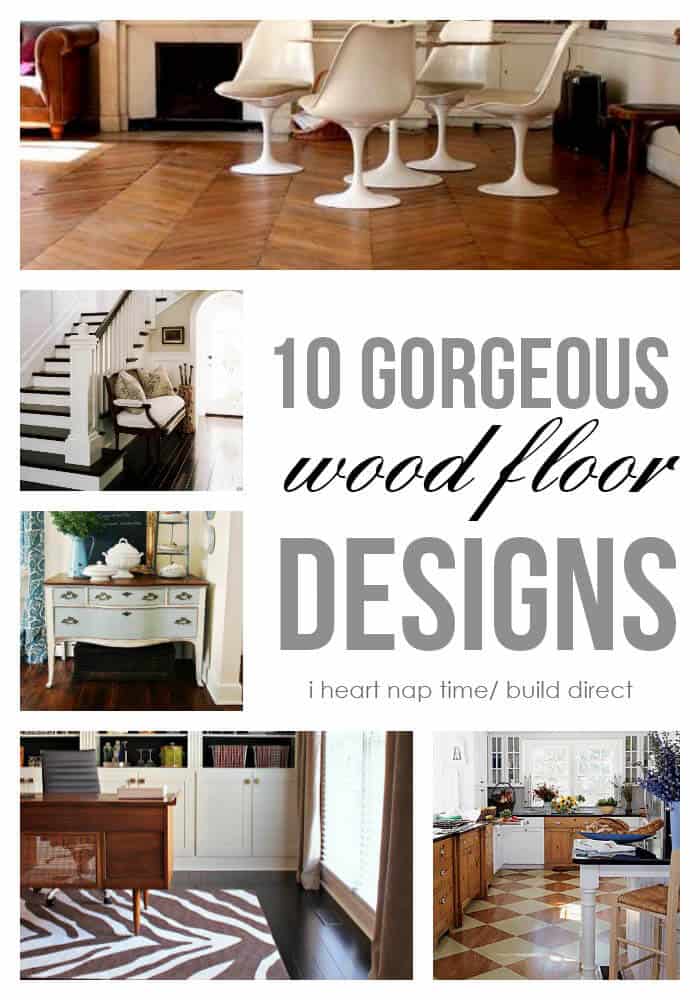
Chevron and Herringbone Patterns
Chevron and herringbone patterns are making a strong comeback in contemporary wood flooring, adding a touch of elegance and sophistication to any room. These classic patterns, originally used in grand European homes and palaces, have been reimagined for modern interiors with fresh takes on color, scale, and finish.
The chevron pattern features planks cut at an angle and laid out to form a continuous “V” shape. This creates a dynamic and visually interesting floor that can be a focal point in any space. The precise alignment of the planks in a chevron pattern requires careful installation, making it a job best suited for professionals.
Herringbone, on the other hand, involves planks laid in a staggered zigzag pattern, creating a more intricate and textured look. This pattern can make a room feel more intimate and cozy while still maintaining a sense of movement and flow. Herringbone floors are versatile and can be used in both traditional and contemporary settings.
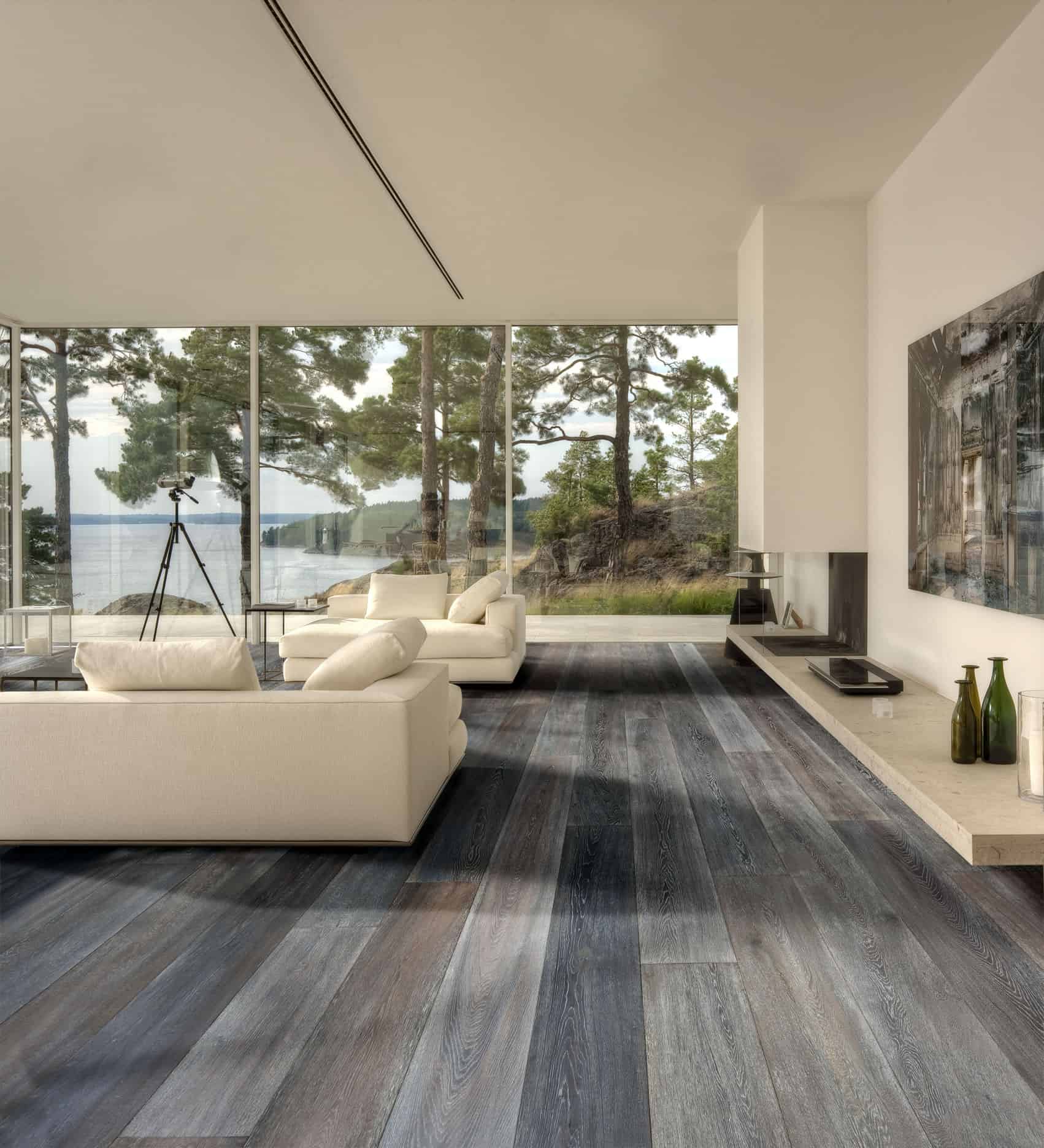
One of the exciting aspects of using chevron and herringbone patterns is the opportunity to play with color and finish. While classic wood tones are always a safe bet, contemporary designs often incorporate contrasting colors or even painted planks to create a bold statement. For example, combining light and dark wood tones can add depth and dimension to the floor.
The scale of the pattern can also be adjusted to suit the room’s size and style. Larger planks can make the pattern more subtle and suited to expansive spaces, while smaller planks can create a more detailed and intricate look, perfect for smaller rooms or accent areas.
Both chevron and herringbone patterns can be used in various parts of the home, from entryways and hallways to living rooms and bedrooms. They are particularly striking in larger, open spaces where the pattern can be fully appreciated. Pairing these patterned floors with simple, modern furnishings can help balance the room and keep the focus on the beautiful flooring.

Mixed Width Wood Flooring
Mixed width wood flooring is a contemporary trend that adds visual interest and a unique character to a room. By using planks of varying widths, this flooring style breaks away from the uniformity of traditional flooring, creating a more dynamic and textured look.
One of the main benefits of mixed width flooring is its ability to create a custom, handcrafted appearance. The varying widths can highlight the natural variations in the wood grain, adding depth and personality to the floor. This approach is particularly effective in rustic or farmhouse-style interiors but can also be adapted for more modern settings.
Mixing widths can also help in creating a more balanced and harmonious space. For example, using wider planks in larger areas and narrower planks in smaller, more confined spaces can help maintain proportion and scale. This flexibility allows for a tailored design that fits the specific needs and dimensions of each room.
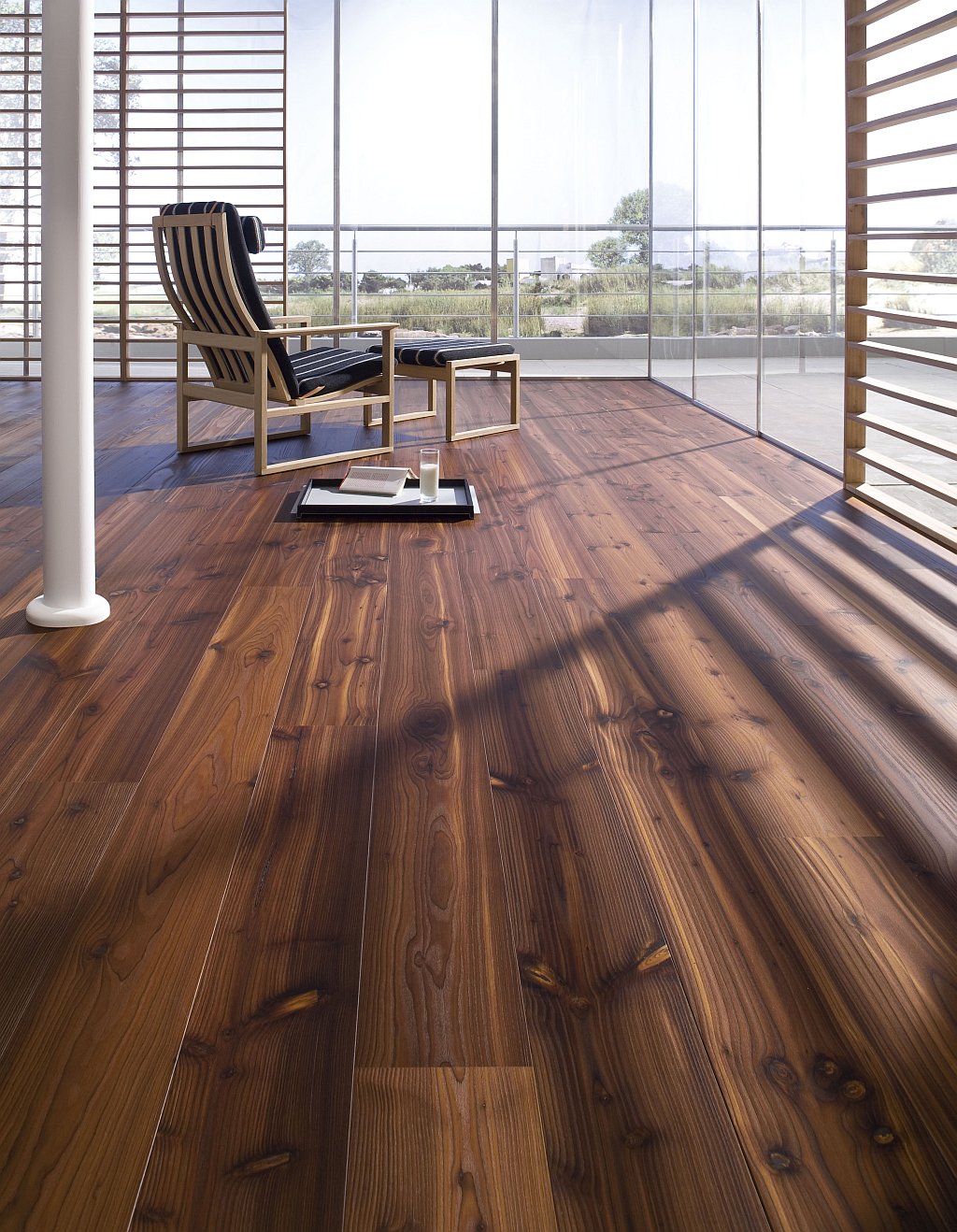
Another advantage of mixed width flooring is its potential for cost savings. By incorporating different widths, you can make use of offcuts and shorter pieces of wood that might otherwise go to waste. This can be both a budget-friendly and eco-friendly choice, reducing material waste and promoting sustainable practices.
The installation process for mixed width flooring is similar to that of standard planks, but it requires careful planning to ensure a cohesive look. Dry-fitting the planks before installation can help visualize the final result and make adjustments as needed. It’s also essential to acclimate the wood properly and follow the manufacturer’s guidelines for spacing and alignment.
Finishing options for mixed width flooring are as diverse as the wood types themselves. A matte or low-sheen finish can enhance the natural beauty of the wood and provide a more contemporary look. Alternatively, a hand-scraped or distressed finish can add a vintage touch, making the floor look like it has a history and story to tell.
To complement mixed width flooring, consider using simple and understated decor. The floor itself becomes a statement piece, and keeping the furnishings and accessories minimal allows it to shine. This approach can create a harmonious and balanced room that feels both stylish and inviting.
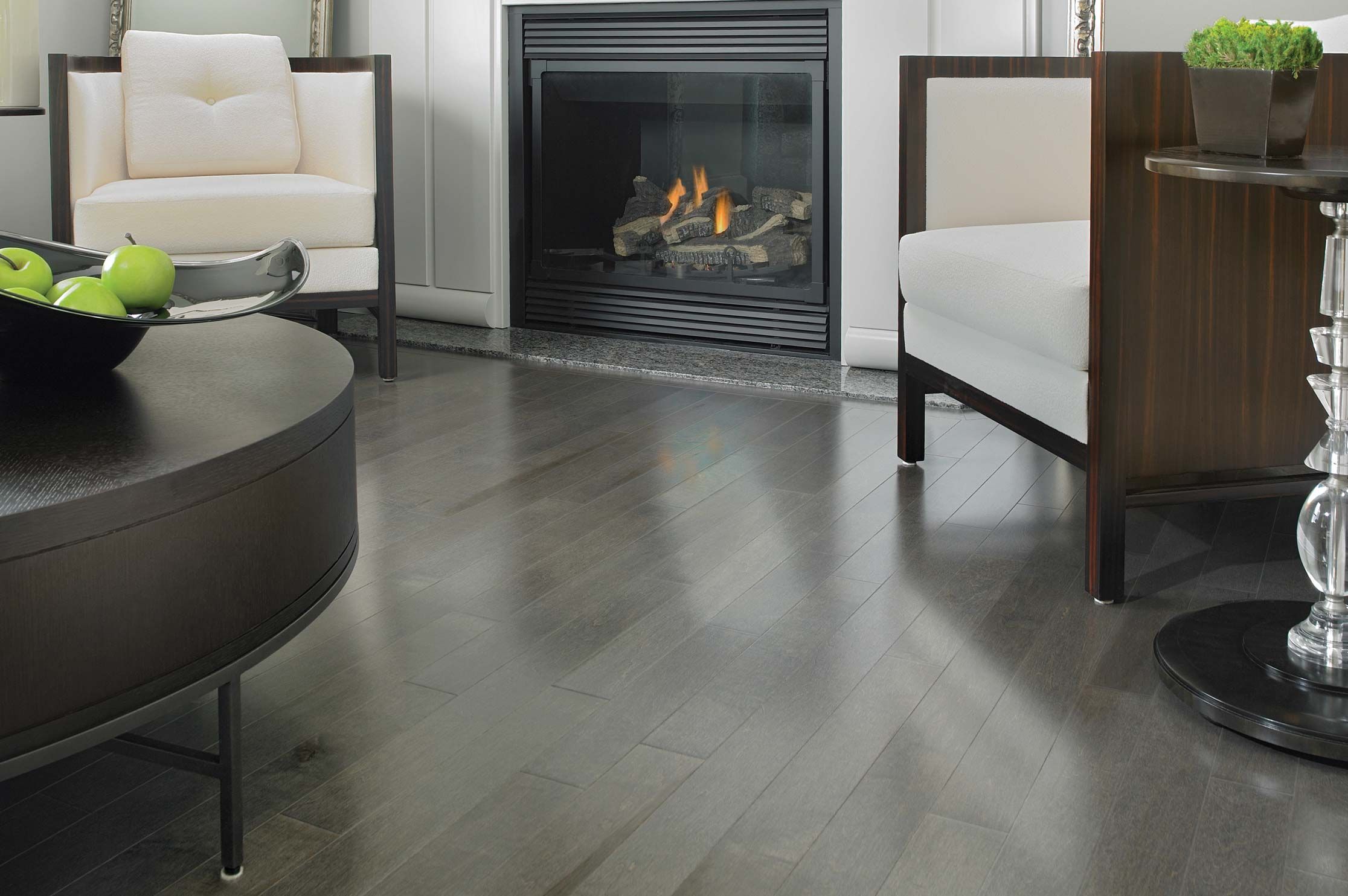
Gray Wood Flooring
Gray wood flooring is a trend that has taken the design world by storm, offering a chic and modern alternative to traditional wood tones. The neutral yet sophisticated hue of gray wood can complement a wide range of interior styles, from industrial and minimalist to cozy and rustic.
One of the main appeals of gray wood flooring is its versatility. The color gray can serve as a neutral backdrop, allowing you to experiment with bold colors and patterns in your decor. Whether you’re going for a monochromatic look or a vibrant and eclectic style, gray wood floors can provide the perfect foundation.
Gray wood flooring comes in various shades, from light, almost whitewashed grays to deep, charcoal tones. Lighter shades can make a room feel more open and airy, which is ideal for smaller spaces or rooms with limited natural light. Darker grays, on the other hand, can add a touch of drama and sophistication, making them suitable for larger rooms or those with plenty of natural light.

The finish of the gray wood can also impact the overall look and feel of the room. A matte finish provides a more contemporary and understated look, while a satin or semi-gloss finish can add a touch of elegance and reflect more light. Wire-brushed or distressed finishes can give the wood a more textured and rustic appearance, adding character and depth.
Gray wood flooring is available in various wood species, each offering unique grain patterns and characteristics. Oak, maple, and ash are popular choices due to their natural light color, which can be easily stained to achieve the desired gray tone. For a more exotic look, consider wood species like walnut or teak, which can provide rich, deep gray hues.
Maintaining gray wood flooring is relatively straightforward. Regular sweeping or vacuuming to remove dust and dirt, along with occasional damp mopping with a wood floor cleaner, can keep the floors looking their best. It’s important to avoid using harsh chemicals or excessive water, as these can damage the finish and the wood itself.
To enhance the beauty of gray wood flooring, consider pairing it with complementary colors and materials in your decor. Whites, blacks, and other neutrals can create a cohesive and sophisticated look, while bold colors like teal, mustard, or coral can add a pop of interest and contrast. Natural materials like stone, metal, and leather can also complement the cool tones of gray wood, creating a balanced and harmonious space.

Sustainable Wood Flooring Options
Sustainability is becoming increasingly important in home design, and contemporary wood flooring offers several eco-friendly options that are both stylish and environmentally responsible. Choosing sustainable wood flooring can help reduce your carbon footprint and promote the use of renewable resources.
One of the most popular sustainable options is reclaimed wood flooring. Reclaimed wood is sourced from old buildings, barns, and factories, giving new life to materials that would otherwise be discarded. Each piece of reclaimed wood has its unique history and character, with weathered textures and patinas that add a sense of authenticity and charm to your home.
Bamboo flooring is another excellent sustainable choice. Although technically a grass, bamboo is incredibly durable and can be harvested much more quickly than traditional hardwoods. Bamboo flooring is available in a variety of colors and finishes, making it a versatile option for contemporary interiors. It’s also naturally resistant to moisture and insects, making it suitable for various parts of the home.
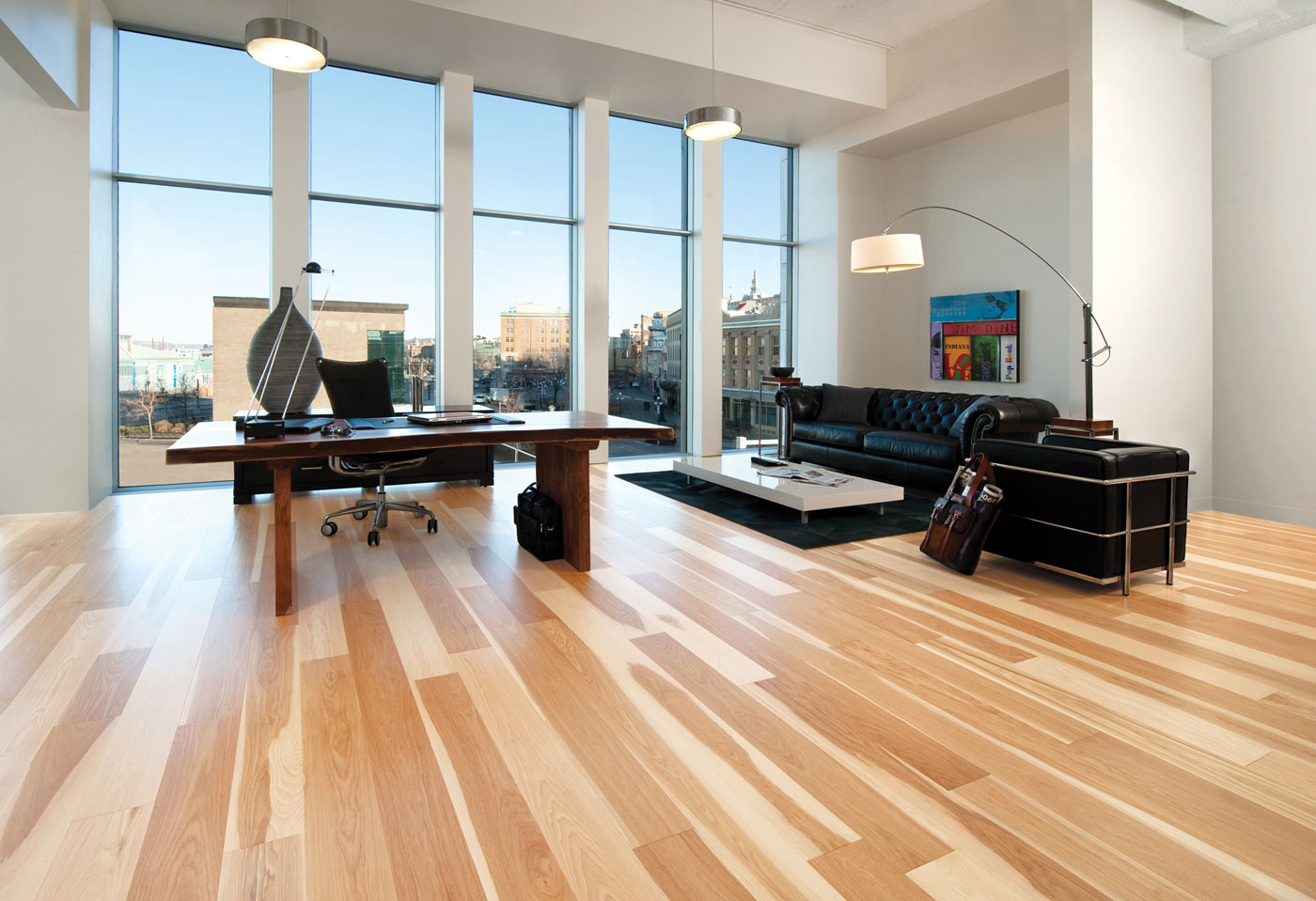
Cork flooring is gaining popularity as a sustainable option due to its renewable nature. Cork is harvested from the bark of cork oak trees, which regrow their bark after harvesting, making it a renewable resource. Cork flooring is soft underfoot, providing a comfortable and warm surface that’s also naturally resistant to mold and mildew. Its unique texture and appearance can add a contemporary touch to any room.
FSC-certified wood is another option for those looking to make an environmentally conscious choice. The Forest Stewardship Council (FSC) certification ensures that the wood is sourced from responsibly managed forests that meet strict environmental and social standards. By choosing FSC-certified wood flooring, you can support sustainable forestry practices and reduce the impact on the environment.
Engineered wood flooring can also be a more sustainable option compared to solid hardwood. Engineered wood uses a thin layer of real wood on top of a core made from plywood or high-density fiberboard (HDF). This construction uses less hardwood overall and can be more stable and resistant to changes in humidity and temperature. Many engineered wood floors are also available in FSC-certified options.
When selecting sustainable wood flooring, it’s important to consider the entire lifecycle of the product, from sourcing and manufacturing to installation and maintenance. Choosing products with low VOC (volatile organic compounds) finishes and adhesives can improve indoor air quality and create a healthier living environment. Additionally, proper maintenance and care can extend the life of your sustainable wood flooring, reducing the need for replacement and further minimizing environmental impact.

Engineered Wood Flooring
Engineered wood flooring has become a popular choice in contemporary home design due to its versatility, durability, and aesthetic appeal. Unlike solid hardwood, engineered wood consists of a top layer of real wood veneer bonded to multiple layers of plywood or high-density fiberboard (HDF). This construction provides enhanced stability and resistance to changes in humidity and temperature.
One of the main advantages of engineered wood flooring is its ability to be installed in areas where solid hardwood may not be suitable, such as basements or rooms with concrete subfloors. The layered construction helps prevent warping and cupping, making it a reliable option for various environments. This versatility allows homeowners to achieve the look of hardwood in spaces that might otherwise be challenging.
Engineered wood flooring is available in a wide range of wood species, colors, and finishes, offering endless design possibilities. From traditional oak and maple to exotic species like teak and acacia, there’s an engineered wood option to suit any style. The top layer of real wood provides the same natural beauty and grain patterns as solid hardwood, ensuring an authentic appearance.

Another significant benefit of engineered wood flooring is its ease of installation. Many engineered wood floors come with a click-lock or tongue-and-groove system, allowing for a floating installation that doesn’t require nails or glue. This makes it a great option for DIY enthusiasts and can reduce the overall cost of installation. Additionally, engineered wood can be installed over various subfloors, including existing flooring, making it a convenient choice for renovations.
Durability is a key feature of engineered wood flooring. The multi-layer construction provides additional strength and resistance to wear and tear, making it suitable for high-traffic areas. While the top layer of wood can still be scratched or dented, it can often be sanded and refinished, extending the life of the floor. However, the number of times engineered wood can be refinished depends on the thickness of the veneer layer.
Maintenance of engineered wood flooring is similar to that of solid hardwood. Regular sweeping or vacuuming to remove dirt and dust, along with occasional damp mopping with a wood floor cleaner, can keep the floors looking their best. It’s important to avoid excessive moisture and harsh chemicals, as these can damage the finish and the wood layers.
To maximize the lifespan of engineered wood flooring, consider using area rugs and furniture pads to protect the surface from scratches and dents. Maintaining stable indoor humidity levels can also help prevent the wood from expanding or contracting excessively. With proper care, engineered wood flooring can provide a beautiful and durable surface that enhances the look of any home.

Common Mistakes to Avoid
When choosing and installing contemporary wood flooring, there are a few common mistakes to avoid to ensure a successful and long-lasting result. One of the most frequent errors is not properly acclimating the wood before installation. Wood naturally expands and contracts with changes in humidity and temperature, and failing to allow the wood to acclimate to the room’s conditions can lead to gaps, warping, and other issues.
Another mistake is neglecting to prepare the subfloor adequately. A clean, level and dry subfloor is essential for a successful installation. Any imperfections or moisture in the subfloor can affect the stability and appearance of the wood flooring. Taking the time to properly inspect and prepare the subfloor can prevent problems down the line.
Choosing the wrong type of wood for the specific environment is another common pitfall. Not all wood species are suitable for all areas of the home. For example, certain types of wood may not be ideal for high-moisture areas like bathrooms or basements. Understanding the characteristics and suitability of different wood species can help you make the right choice for each room.
Improper installation techniques can also lead to issues with wood flooring. Whether you’re installing the floor yourself or hiring a professional, it’s important to follow the manufacturer’s instructions and use the correct tools and materials. Mistakes such as not allowing for adequate expansion gaps or using the wrong adhesive can result in a floor that doesn’t perform well over time.
Skipping regular maintenance is a mistake that can shorten the lifespan of your wood flooring. Wood floors require routine care, including sweeping, mopping, and occasional refinishing. Neglecting these tasks can lead to a buildup of dirt and damage to the finish, making the floor look worn and aged prematurely.
Lastly, not considering the overall design and decor of the room can be a missed opportunity. The type, color, and pattern of wood flooring should complement the existing design elements and furniture. Taking the time to plan and coordinate the flooring with the rest of the room can create a cohesive and harmonious space that enhances the overall aesthetic.
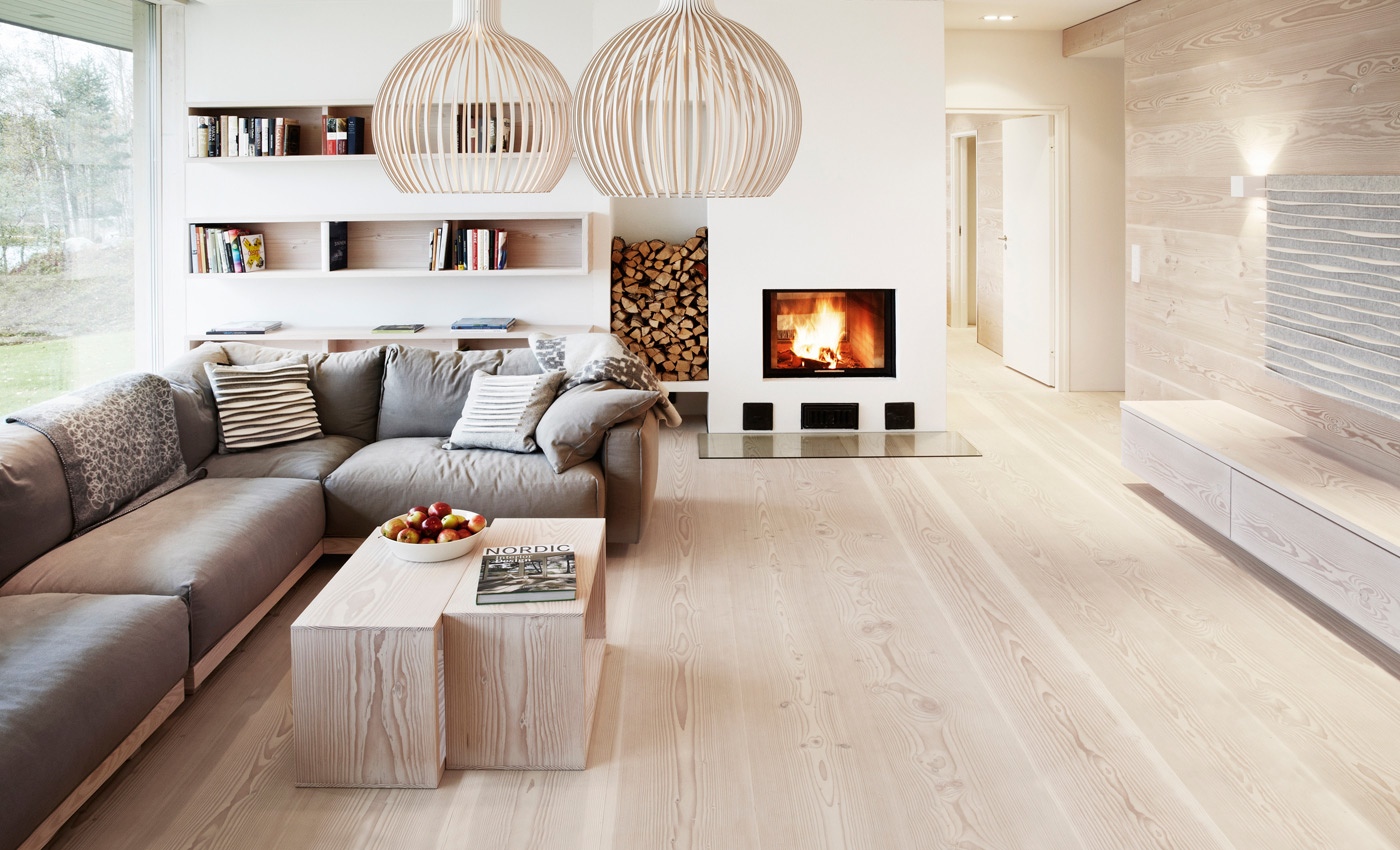
What is the difference between solid hardwood and engineered wood flooring?
Solid hardwood flooring consists of single pieces of wood from top to bottom, providing a traditional and authentic wood look. It can be sanded and refinished multiple times, extending its lifespan. However, it is more susceptible to moisture and temperature changes, making it less suitable for certain areas. Engineered wood flooring, on the other hand, has a top layer of real wood veneer bonded to multiple layers of plywood or high-density fiberboard (HDF). This construction provides enhanced stability and resistance to changes in humidity and temperature, making it more versatile for different environments.
How do I maintain my wood flooring to ensure its longevity?
Maintaining wood flooring involves regular cleaning and periodic care. Sweep or vacuum the floors regularly to remove dirt and dust, and use a damp mop with a wood floor cleaner for deeper cleaning. Avoid excessive moisture and harsh chemicals, as these can damage the finish and the wood itself. Placing area rugs in high-traffic areas and using furniture pads can help protect the surface from scratches and dents. Maintaining stable indoor humidity levels can also prevent the wood from expanding or contracting excessively.
Can I install wood flooring in high-moisture areas like bathrooms or basements?
While solid hardwood flooring is generally not recommended for high-moisture areas due to its susceptibility to water damage, engineered wood flooring can be a suitable option. Engineered wood’s layered construction provides better resistance to moisture and temperature changes, making it more stable in environments like bathrooms or basements. However, it’s important to choose engineered wood with a water-resistant finish and to properly seal the edges during installation to prevent water infiltration.
What are the benefits of using reclaimed wood flooring?
Reclaimed wood flooring offers several benefits, including environmental sustainability and unique aesthetic appeal. Sourcing wood from old buildings, barns, and factories gives new life to materials that would otherwise be discarded, reducing the demand for new timber and promoting sustainable practices. Each piece of reclaimed wood has its history and character, with weathered textures and patinas that add a sense of authenticity and charm to your home. Reclaimed wood can also be more durable than new wood, as it has already been exposed to and stabilized by the elements.
How do I choose the right wood flooring for my home?
Choosing the right wood flooring involves considering several factors, including the room’s size, lighting, existing decor, and the specific needs of the space. For smaller rooms or those with limited natural light, lighter wood tones or wide plank flooring can create a sense of openness. In larger rooms, darker wood tones or patterned designs like chevron or herringbone can add depth and interest. It’s also important to consider the wood’s durability and suitability for the room’s environment. Consulting with a flooring professional and obtaining samples can help you make an informed decision.
Can wood flooring be installed over existing flooring?
Yes, wood flooring can often be installed over existing flooring, provided the existing surface is clean, level, and in good condition. Engineered wood flooring, in particular, can be installed as a floating floor over various subfloors, including existing wood, tile, or concrete. However, it’s important to address any imperfections or moisture issues with the existing flooring before installation to ensure a stable and long-lasting result. Using an appropriate underlayment can also help improve sound insulation and provide additional stability.

Related Posts: